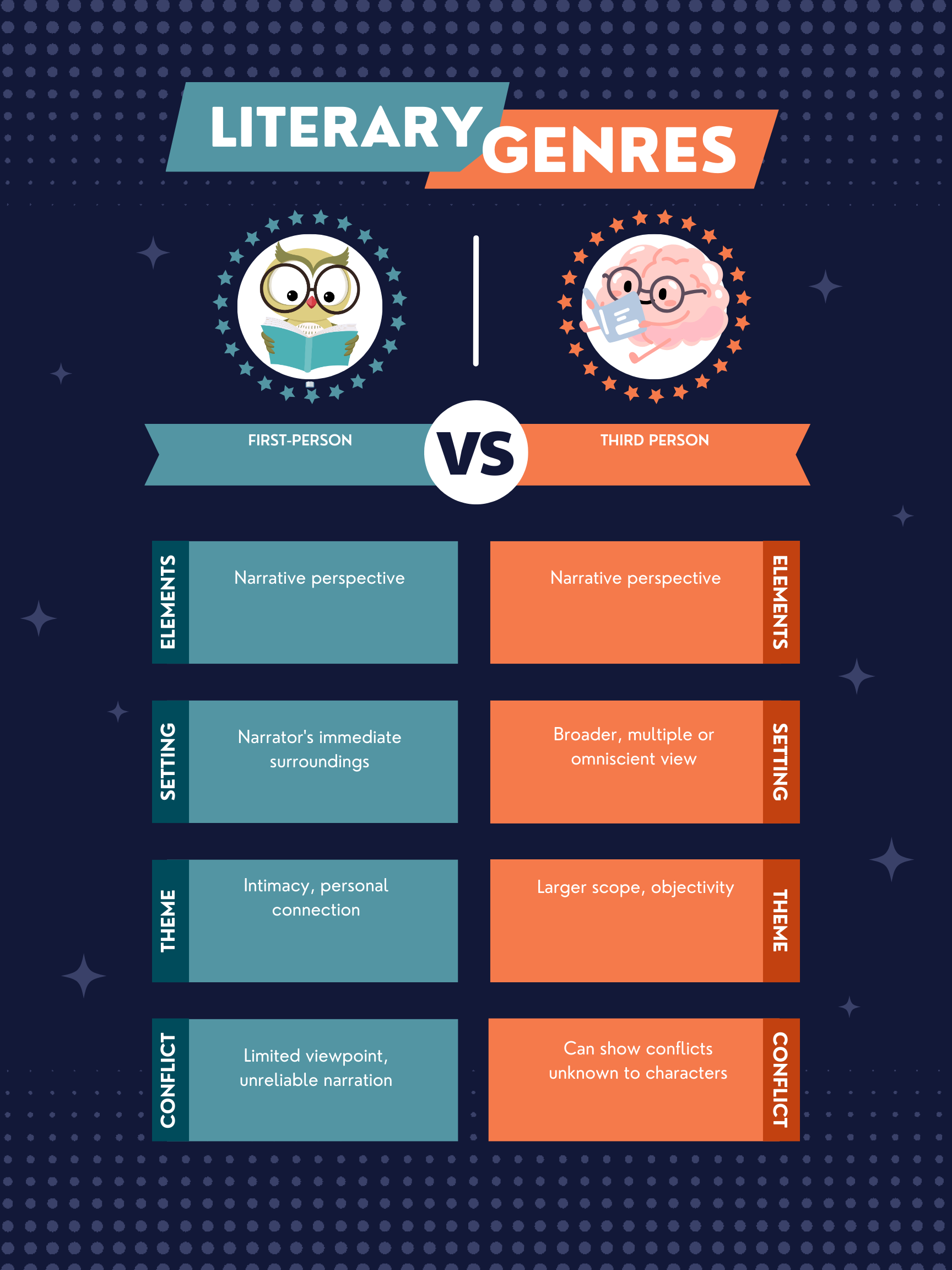“First-person narration is from the “I” perspective; Third-person narration uses “he,” “she,” or “they,” and may be omniscient or limited.”
First-Person 📖
First-person narration pulls you into the story directly through the eyes of the narrator, offering an intimate and personal viewpoint. It’s as if you’re living the story through the narrator’s experiences, thoughts, and emotions. For instance, in J.D. Salinger’s The Catcher in the Rye, Holden Caulfield tells his story with, “If you really want to hear about it, the first thing you’ll probably want to know is where I was born…”
Third Person 🌍
Third-person narration offers a broader perspective, telling the story from outside any single character’s immediate perspective. It can be omniscient, knowing all characters’ thoughts, feelings, and motivations, like in Leo Tolstoy’s War and Peace, or limited, focusing closely on the experiences of one character at a time, such as J.K. Rowling’s use in the Harry Potter series.
Summary
| Literary Device | Definition | Purpose | Usage | Relevant Examples |
|---|---|---|---|---|
| First-Person | Narration from the “I” perspective | To provide an intimate and personal viewpoint | Autobiographies, memoirs, personal stories | The Catcher in the Rye by J.D. Salinger |
| Third-Person | Narration using “he,” “she,” or “they” | To offer a broader perspective | Novels, stories with complex plots or multiple characters | War and Peace by Leo Tolstoy |
Writing Tips
- For First-Person: Dive deep into your character’s psyche. Consider their unique voice, perspectives, and how they interpret the world around them. Practice by writing diary entries for your characters.
- For Third-Person: Experiment with the level of omniscience. Try writing a scene from an omniscient perspective, then rewrite it from a limited view focusing on one character. Notice how the story’s tone and focus shift.
FAQs
Q: Can a story switch between first-person and third-person narration?
A: Yes, though it requires skill to ensure the transition is smooth and enhances the story rather than confusing the reader.
Q: How does the choice of narration impact the reader’s connection to the characters?
A: First-person can create a closer emotional connection, while third-person can offer a wider understanding of the story’s world and multiple perspectives.
Q: Is one narrative voice better than the other?
A: No, the choice depends on the story you want to tell and the effect you want to achieve. Each has its strengths and appropriate uses.
Exercise
Read the following paragraph and identify whether it’s first-person or third-person narration:
“Sarah walked through the abandoned warehouse, her heart racing. She could hear the faint sound of dripping water, echoing off the walls. Suddenly, she stopped; there was a shadow in the distance.”
Answer: Third-person limited.
Other Device Comparisons You May Find Interesting
- Past Tense vs Present Tense: The impact of time on storytelling.
- Direct vs Indirect Characterization: How writers reveal character traits.
- Static vs Dynamic Characters: The evolution of characters over time.
- Dialogue vs Monologue: Exploring conversations and inner thoughts.
Each of these comparisons offers a unique lens through which to view and understand the craft of writing, further enriching the tapestry of storytelling.

